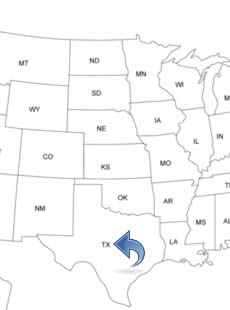TEXAS PEOPLE SEARCH!
- ✔ Contact Info
- ✔ Phone Numbers
- ✔ Criminal Records
- ✔ Income Info
- ✔ Neighbors
- ✔ People's Age
- ✔ Property Ownership
- ✔ And Much More
Houston, Texas
Houston is located in the south-eastern part and is the largest city in the U.S. State of Texas. Space City. Bayou City. Houston is the fourth largest city in the United States. The city has a symphony orchestra and a theater district. Houston is recognized worldwide for its energy industry, oil and natural gas, and only New York City is home to more Fortune 500 headquarters than Houston. Houston has the second-largest concentration of theater seats in a downtown area in the USA. Yearly more than 7 million people visit the Museum District's cultural institutions and exhibits.
To See And To Do In Houston
- Houston Museum of Natural Science
- Forbidden Gardens
- Chase Tower Observatory
- Contemporary Arts Museum
- Buffalo Soldiers National Museum
- Houston Zoo
- Chinese Consulate Building
- Art Car Museum
- Museum of Fine Arts
- Hermann Park
- Market Square Park
- Memorial Park
- Rothko Chapel
- Discovery Green Park
- Buffalo Bayou Park
- Downtown Aquarium
- Downtown Tunnel System
- Houston Grand Opera
- Theatres
- Houston Telephone Museum
- Children's Museum of Houston
- Linh Son Pagoda Statue Of The Buddha
- The Health Museum
- Holocaust Museum
- Japanese Garden
- Houston Maritime Museum
- St. Arnolds Brewery
- The Galleria Shopping Mall
- Space Center
- Battleship Texas and San Jacinto Battleground Monument
History Of Houston - Timeline
In 1836, Houston was founded. The brothers John Kirby Allen and Augustus Chapman Allen bought the land to build a town. General Sam Houston and his army had a couple of months earlier won the Battle of San Jacinto, and the Allen brothers named the land they just had bought after Sam Houston. The brothers hired Gail Borden, Jr. from Norwich, New York. He plotted the town and laid out wide streets for the town.
In 1837, Houston was incorporated. General Sam Houston was now the president of the Republic of Texas, and he signed an act authorizing Houston to incorporate.
In 1838, the Houston Fire Department was established. In 1840, the digging of what over 70 years later would be the Port of Houston started. In 1841, the Houston Police Department was formed. In 1850, about 2,400 people were living in the town.
In 1853, the railroad was completed. In 1854, Market Square Park was donated to the town by the town's founder Augustus Chapman Allen. In 1859, a fire destroyed much of the town. In 1868, first gaslights were installed and mule-drawn trolley cars appeared in the streets.
In 1870, Houston becomes a port of entry. In 1877, the first free public schools were established. In 1880, the newspaper the Houston Post was established and the first telephone exchange was built. In 1882, the first electric power plant was built. In 1891, President Benjamin Harrison visited the city. In 1897, the city put down its first asphalt paving and the first automobile appeared in Houston.
In 1900, more than 44,600 people were living in the city. In 1901, the newspaper the Houston Chronicle was founded. In 1904, Houston Lyceum and Carnegie Library opened, later known as Houston Public Library.
In 1910, the Houston Police Department purchased its first automobile. In 1913, Houston Symphony was established. In 1914, President Woodrow Wilson opened the Port of Houston. In 1922, George Hermann donated the land to the Hermann Park. In 1924, the Museum of Fine Arts opened.
In 1927, the state highway to Houston was built and automatic traffic lights were installed in the city. Also in 1927, Houston Junior College was established which later, in 1934, became the University of Houston. In 1939, the City Hall building was completed.
In 1940, the streetcars were replaced by buses. In 1961, the Sharpstown Mall opened. It was the first indoor air-conditioned mall in the world. Also in 1961, NASA's Manned Spacecraft Center was formed. In 1973 it was renamed to the Lyndon B. Johnson Space Center.
In 1965, Houston Astrodome opened. It was the world's first indoor domed sports stadium. In 1969, Intercontinental Airport opened. It was in 1997 renamed to honor George H. W. Bush. In 1971, the One Shell Plaza building was completed. At the time it was the tallest building in the city.
In 1973, Elmer Wayne Henley told the police that he and David Brooks, for almost three years, had helped Dean Arnold Corll to abduct, rape, torture and murder at least 28 boys in a series of killings in Houston. In 1982, the JPMorgan Chase Tower was completed. It is currently the tallest building in the city. In 1983, the Wells Fargo Plaza building was completed and it is the second largest building in Houston.
In 2002, the Reliant Stadium opened. It was the first facility in the NFL to have a retractable roof.

